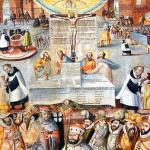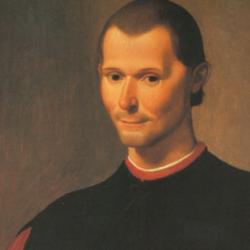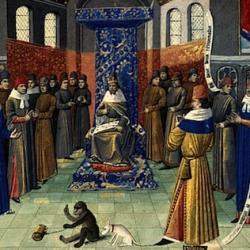Ryszard Legutko’s The Demon in Democracy is a bracing read. Legutko, a Polish philosopher and member of the European Parliament, has lived under both communism and liberalism, and so is unusually well-positioned to articulate his counter-intuitive thesis: “both attitudes – the communist and the liberal-democratic – are linked by . . . some common principles and ideals” (1).
His book examines five themes – history, utopia, politics, ideology, and religion – to fill out the parallel. At the outset, he argues that the two movements are similar because they have a common origin as “modernization projects.”
The concept of “modernization” comes originally from the world of technology. Technology “is and has always been about constant improvement” (6). Prometheus became the Titan hero of modernization, which “was believed to be a vehicle of infinite progress carrying the human genius to unimaginable achievements.” Though the concept of “moernization” has expanded, it “draws is strength largely from the unprecedented technological successes that man has achieved so far and with which it can yet surprise the world in the future” (6).
Transferred from technology to social and political realities, modernization is “nourished by the belief that the world cannot be tolerated as it is and that it should be changed: that the old should be replaced by the new” (6). The early heroes of modernity – Legutko names Machiavelli, Hobbes, and Bacon – “saw themselves as pioneers of the new who boldly turned their backs on the past. Toward the past they felt, on the one hand, contempt of the kind one feels for something both foolish and harmful, and on the other hand, sympathy mixed with the condescension one may feel toward something that had once, perhaps, some nobility and chart, but which disappeared, never to return” (6-7).
Modernizers draw on the past, necessarily, but they “did all they could to obliterate any traces of inspiration” (he makes the obvious reference to Descartes here). Thus: “Modernitas . . . inevitably involves conscious detachment, passing over the border, crossing the Rubicon, severing the umbilical cord, growing up and leaving adolescence behind, and doing other similar things denoted by dozens of other more or less platitudinous metaphors” (7).
Engineering is taken as a metaphor for politics, in both communism and liberalism: “In both systems a cult of technology translates itself into acceptance of social engineering as a proper approach to reforming society, changing human behavior, and solving existing social problems” (7).
Under communism, this mean “reversing the current of Siberia’s rivers, in [liberalism] a formation of alternative family models; invariably, however, it was the constant improvement of nature, which turns out to be barely a substrate to be molded into a desired form” (7-8).
It’s not enough that the physical and technical environment be updated. Everything needs to be modernized: “thinking, family, school, literature, and philosophy. If a thing, a quality, an attitude, an idea is not modern, it should be modernized or will end up in the dustbin of history” (8). Both systems promise “liberation from the old bonds.” All bonds and associations are shed or renegotiated, but there is a non-negotiable commitment to communism or liberal democracy, that is, to modernization.
As modernization projects, both of these systems work with a version of Christian eschatology – the new has already come, but it has yet to be fully realized. Between the advent of freedom and the end of history, society is engaged in a constant struggle to realize the eschaton, to approach the end of history.












